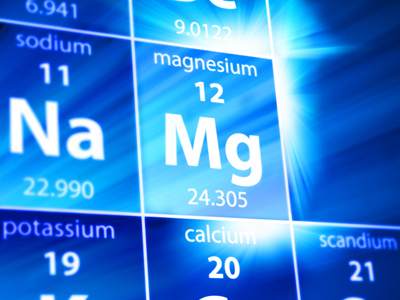
Ask the AI Tutor
Need help with Chemistry - Ionic Bonding (AQA)? Ask our AI Tutor!
AI Tutor - Lucy
Connecting with Tutor...
Please wait while we establish connection

Magnesium is in group II of the periodic table.
Chemistry - Ionic Bonding (AQA)
Discover how ionic bonding works, when atoms transfer electrons to form ions. Learn why oppositely charged ions attract and build giant lattices in GCSE Chemistry AQA.
1 .
Which of the following statements is not correct about chlorine?
Chlorine gas is poisonous
Chlorine has six electrons in its outer energy level
Chlorine's outer energy level is not full which means it is a reactive non-metal
Chlorine forms a negative ion
Chlorine is in group VII of the periodic table and therefore has seven electrons in its outer energy level
2 .
Which of the following reactions does not involve ionic bonding?
sodium + chlorine → sodium chloride
sulfur and oxygen → sulfur dioxide
iron and oxygen → iron oxide
zinc and nitric acid → zinc nitrate and water
Sulfur and oxygen are non-metals therefore covalent bonding takes place
3 .
What is the ionic bond between sodium and chlorine?
A pair of shared electrons
The nucleus of the sodium atom sticks to the chlorine
Particles called gluons attach the two atoms to each other
An electrostatic charge holds them together
When the sodium atom loses an electron it has more protons than electrons. This means it has a small positive charge overall. The opposite happens with the chlorine and the two charges attract each other
4 .
46g of sodium react with how much oxygen to produce 110g of sodium oxide?
23g
46g
64g
110g
Don't be put off by the fact that this is a calculation - remember the Law of Conservation of Mass. You know there is 110g of product so there must have been 110g of reactants to begin with. You know the mass of sodium so the difference must be the mass of oxygen needed
5 .
When sodium and chlorine react what happens to their electrons?
One electron is transferred from the sodium to the chlorine
One electron is transferred from the chlorine to the sodium
The chlorine and the sodium share an electron
Seven electrons are transferred from the chlorine to the sodium
In ionic bonding, the electrons are always transferred from metal to non-metal
6 .
When metals bond with non-metals what happens to their electrons?
The metals lose electrons
The metals gain electrons
The metals share their electrons
The metals keep the same number of electrons
This means that they form positive ions
7 .
Why is sodium a reactive metal?
It has a low melting point
It is silvery-grey in colour
It has one electron in its outer energy level (electron shell)
It has seven electrons in its outer shell
Having just 1 electron in its outer energy level is not as stable as having a full one. If it loses the electron, all of the remaining energy levels are full and it is much more stable
8 .
Potassium is in the same group of the periodic table as sodium but lower down the group. This means what?
Potassium is less popular
Potassium has more electrons in its outer energy level
Potassium will react more slowly
Potassium will form ionic compounds with non-metals
All metals, not just those in group I of the periodic table, will form ionic compounds with non-metals
9 .
Which sub-atomic particles are involved in chemical bonding?
Neutrons
Protons
Electrons
All of them
Chemicals join together by transferring or sharing electrons. Their nuclei remain unchanged
10 .
Magnesium is in group II of the periodic table. How many electrons would it transfer when it reacts with oxygen and what would the charge be on its ion?
1 electron, +1 ion
2 electrons, +2 ion
3 electrons, +2 ion
4 electrons +3 ion
You get the number of electrons in the outer shell from the group number. For each electron lost, the metal ends up with one positive charge. So here, two electrons lost mean that the magnesium ion must end up with two positive charges
**Unlimited Quizzes Await You! 🚀**
Hey there, quiz champ! 🌟 You've already tackled today's free questions.
Ready for more?
Ready for more?
🔓 Unlock UNLIMITED Quizzes and challenge yourself every day. But that's
not all...
not all...
🔥 As a Subscriber you can join our thrilling "Daily Streak" against other
quizzers. Try to win a coveted spot on our Hall of Fame Page.
quizzers. Try to win a coveted spot on our Hall of Fame Page.
Don't miss out! Join us now and keep the fun rolling. 🎉
**Unlimited Quizzes Await You! 🚀**
Hey there, quiz champ! 🌟 You've already tackled today's free questions. Ready for more?
🔓 Unlock UNLIMITED Quizzes and challenge yourself every day. But that's not all...
🔥 As a Subscriber you can join our thrilling "Daily Streak" against other quizzers. Try to win a coveted spot on our Hall of Fame Page.
Don't miss out! Join us now and keep the fun rolling. 🎉






